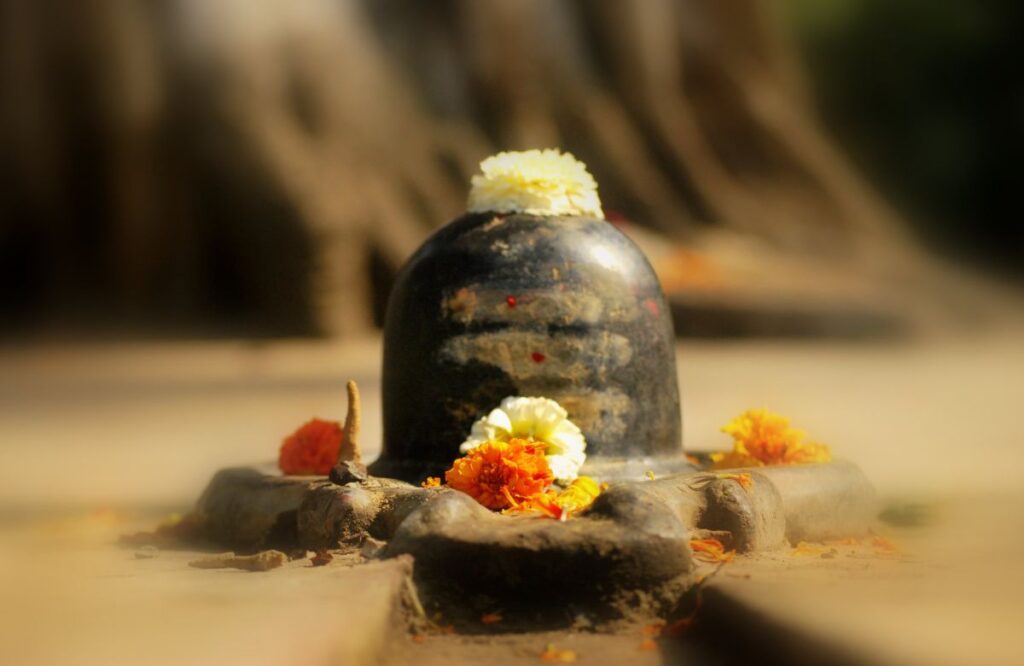The Shivalinga, a revered and sacred symbol deeply rooted in the tenets of Hinduism, carries immense significance as it serves as a representation of Lord Shiva, the supreme deity revered for his role in both destruction and regeneration. This article seeks to unravel the profound mysticism enveloping the Shivalinga, delving into the intricate reasons behind the ritualistic worship known as the Shivalinga pooja. Furthermore, it aims to shed light on the ethereal energies that devout worshipers frequently report experiencing in the divine presence of this symbolic manifestation of Lord Shiva.
The Essence of Shivalinga
The essence of the Shivalinga in Hinduism extends beyond its tangible form, delving into the metaphysical and spiritual realms. Derived from the Sanskrit term “phallus of Shiva,” the Shivalinga is not a mere representation of anatomical symbolism but a profound manifestation of the formless, infinite nature of Lord Shiva. Its cylindrical shape symbolizes the cosmic pillar of light, embodying the divine unity of Lord Shiva and Goddess Shakti. Devotees regard the Shivalinga as a potent symbol of creation and destruction, emphasizing the cyclical nature of existence.
Beyond its physical representation, the Shivalinga serves as a focal point for spiritual practices, offering a tangible form through which devotees can connect with the transcendent energy of Lord Shiva.
The worship of the Shivalinga, known as Shivalinga pooja, becomes a symbolic act of surrender and devotion. It invites devotees to contemplate the formless nature of the divine and recognize the omnipresence of Lord Shiva in all aspects of existence.
The essence of the Shivalinga lies in its ability to transcend the limitations of form, inviting individuals to explore the boundless realms of spirituality and connect with the eternal cosmic energy that governs the universe.
Why Do We Perform Shivaling Pooja?
The performance of Shivalinga pooja holds profound significance in Hinduism, offering devotees a sacred ritual to connect with the divine energy of Lord Shiva. Several reasons underpin the tradition of Shivalinga pooja, making it an integral part of religious practices for millions of followers:
- Spiritual Growth: Shivalinga pooja is believed to contribute to an individual’s spiritual evolution. By engaging in the ritual, devotees seek spiritual growth, aiming to deepen their connection with Lord Shiva and attain higher states of consciousness.
- Blessings for Prosperity: Devotees perform Shivalinga pooja to seek the blessings of Lord Shiva for material and financial prosperity. It is a symbolic act of surrender, expressing gratitude for the abundance in life and a request for continued blessings.
- Liberation from the Cycle of Birth and Death: The overarching goal of Hinduism is to attain moksha, liberation from the cycle of birth and death. Shivalinga pooja is believed to facilitate this spiritual journey, guiding devotees towards the ultimate goal of self-realization and oneness with the divine.
- Harmony in Relationships: Worshipers seek Lord Shiva’s divine intervention for harmony and well-being in relationships. Whether it be familial, romantic, or social, the ritual is thought to bring blessings for peaceful and harmonious connections.
- Removal of Obstacles: Shivalinga pooja is often performed to overcome challenges and obstacles in life. Devotees believe that seeking Lord Shiva’s blessings through this ritual can help remove hindrances and pave the way for a smoother life journey.
- Purification of the Soul: The act of offering various sacred items, such as water, milk, and bilva leaves, is seen as a means of purifying the soul. Devotees engage in Shivalinga pooja to cleanse themselves spiritually and foster a sense of purity and sanctity in their lives.
- Expression of Devotion and Surrender: Shivalinga pooja serves as a powerful expression of devotion and surrender to the divine. By performing the ritual, devotees convey their love and reverence for Lord Shiva, recognizing the omnipresence of the divine in their lives.
The Significance of Lingodhbhavam
Lingodhbhavam, the story of the origin of the Shivalinga, is intricately linked to the divine narrative. It narrates how Lord Shiva emerged as a fiery pillar of light, challenging Lord Brahma and Vishnu to fathom His infinite nature. The Shivalinga represents this awe-inspiring moment of cosmic creation.
The Significance of Lingodhbhavam, a prominent mythological narrative in Hinduism, lies in its profound symbolism and spiritual teachings. According to this sacred legend, Lingodhbhavam recounts the celestial contest between Lord Brahma and Lord Vishnu to determine the origin and culmination of the colossal, fiery pillar of light that emerged in the cosmic realm.
Unable to fathom the extent of this radiant manifestation, Lord Shiva revealed his true form as the Shivalinga, symbolizing the infinite nature of the divine. This cosmic event underscores the transcendence of Lord Shiva beyond conventional forms and illustrates the omnipresence of the supreme cosmic energy in the universe.
The Lingodhbhavam narrative holds deep philosophical implications, emphasizing the timeless theme of the formless nature of the divine. It teaches devotees the importance of looking beyond physical appearances and understanding the boundless and infinite aspects of spirituality.
The Shivalinga, emerging from the cosmic pillar of light, becomes a tangible representation of the immeasurable and eternal presence of Lord Shiva, encouraging followers to seek spiritual enlightenment beyond the confines of material perceptions. The Significance of Lingodhbhavam thus serves as a profound reminder of the divine’s incomprehensible magnitude and its omnipresence in all aspects of creation.
Why Do We Feel Energies near Shivlinga?
The sensation of energies near a Shivlinga during worship is believed to be a manifestation of the divine presence and cosmic energy associated with Lord Shiva. Devotees often report feeling a heightened spiritual aura, warmth, or vibrations in the vicinity of the Shivlinga. According to Hindu beliefs, the Shivlinga acts as a conduit for the cosmic forces and divine energy, channeling it into the surrounding environment.

The rituals performed during Shivalinga pooja are thought to amplify these energies, creating a sacred atmosphere that resonates with spiritual vibrations. This phenomenon is not only a testament to the deep spiritual connection between the worshiper and the divine but also a reflection of the transcendental power that the Shivalinga symbolizes – a tangible link to the infinite and eternal cosmic energies governed by Lord Shiva.
Scientific Perspectives on Shivalinga
From a scientific standpoint, the Shivalinga holds unique characteristics that intrigue researchers and enthusiasts alike. The cylindrical shape and the material composition of the Shivalinga are thought to contribute to its acoustic and vibrational properties. Some posit that the resonance generated during rituals could have subtle effects on the surrounding environment and human physiology, inducing a sense of calmness and well-being.
Additionally, the Shivalinga’s inherent geometry aligns with principles found in sacred geometry, suggesting a potential impact on energy fields. While these scientific perspectives do not diminish the spiritual significance of the Shivalinga, they offer intriguing insights into how the physical attributes of this sacred symbol may interact with natural phenomena, contributing to the captivating aura that surrounds the worship of Lord Shiva.
Pilgrimage Sites and Famous Shivalingas
Pilgrimage sites hosting revered Shivalingas are scattered across the diverse landscapes of India, each carrying its own unique mythological significance and spiritual ambiance. One of the most prominent among these is the sacred Kedarnath in the Himalayas, where devotees undertake a challenging pilgrimage to seek blessings from the Jyotirlinga, believed to be the form of Lord Shiva. The twelve Jyotirlingas, scattered across the country, including Somnath in Gujarat, Mallikarjuna in Andhra Pradesh, and Rameswaram in Tamil Nadu, are revered as powerful manifestations of Lord Shiva. The ancient temple of Mahakaleshwar in Ujjain, the spiritual city of Varanasi with the revered Kashi Vishwanath Temple, and the historic Ellora Caves in Maharashtra, housing the impressive Kailash Temple, are additional destinations drawing millions of pilgrims annually.
Each of these pilgrimage sites, with its associated Shivalinga, invites devotees to embark on a sacred journey, fostering a profound connection with the divine and providing a tangible link to the timeless spirituality embedded in the cultural fabric of India.
The Shivalinga stands as a powerful symbol, invoking spiritual devotion and cosmic energies. The act of worshipping the Shivalinga transcends religious boundaries, uniting devotees in a shared reverence for the divine. Whether in the sanctum of a temple or within the peaceful confines of a home shrine, the Shivalinga remains an eternal symbol of Lord Shiva’s omnipresence and the cosmic forces that govern the universe.


